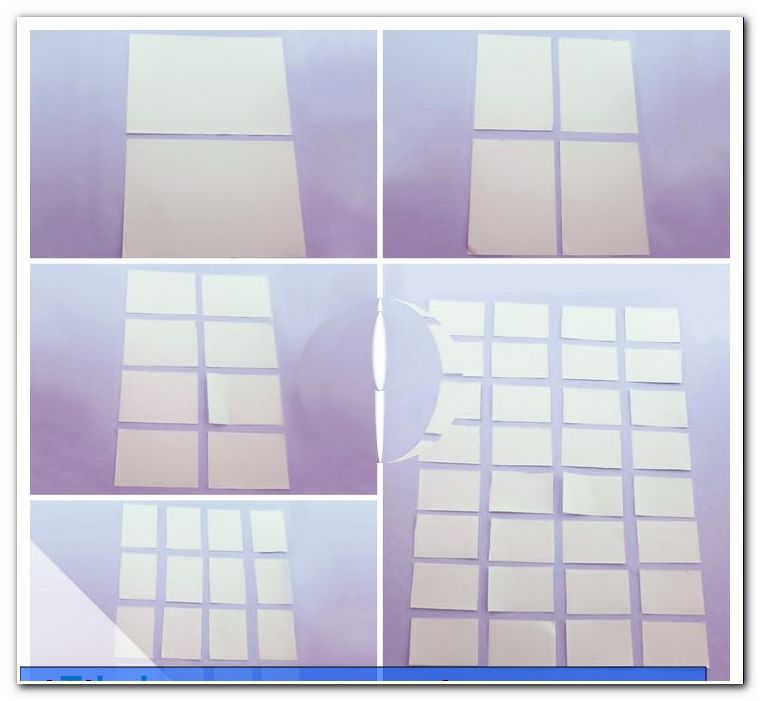Factsheet - Power cable colors and their meaning

- Three-core sheathed cables
- 1) The outer conductor
- 2) The neutral conductor
- 3) The protective conductor
- Three-core power cables with and without PE
- Four-core cable
- Five-core cables
- Two-core cables without PE
- Cable colors in practice
- 1) Pay attention to safety
- 2) Phase check
- 3) Power cable at the car battery
Power cables can be found in and around the household in many areas. Be it attaching the lamps or replacing the power outlet - careful and careful handling is always important. It is crucial to be aware of the importance of each vein and the associated color scheme. Only then is a professional connection possible and the security is guaranteed.
Live cables have multiple wires, which have different colors. This will allow you to quickly identify which function the wire in question has. First of all, you have to consider the type of power cable, for example, a three-core or a five-core cable. Then you can differentiate the individual wires on the color scheme. Incorrectly connected cables can lead to great risks, so that the colors play an important role. Read about the different markings and how to connect the wires.
Three-core sheathed cables
For example, if you change a lamp in the home, you typically encounter three-core sheathed cables (NYM). After removing the power outlet or disassembling the old ceiling light, you will find three different cables:
1) The outer conductor
The outer conductor supplies the load with electricity and is therefore live. It is therefore a current-carrying conductor. In order to be able to identify him, in the so-called phase (L) a black or brown sheathing is present.
2) The neutral conductor
The neutral conductor (N) is a current-carrying conductor. It serves to return the electricity from the consumers to the power source. The color marking is a blue or gray sheath.
3) The protective conductor
The protective conductor (PE) leads to the conductive metal housing, the dangerous Berührspannung towards earth. They recognize the protective conductor by the green-yellow color.
Three-core power cables with and without PE
A distinction is made between three-core power cables with and without PE. If it is a cable without PE, then the three wires have the following colors and meanings:
- Brown: outer conductor
- Gray: Neutral (N)
- black

For a 3-core cable with PE, however, you will find the following colors and meaning:
- Green-yellow: protective conductor (PE)
- Blue: Neutral (N)
- Brown: outer conductor

The meaning of the power cable color: Attention - in individual cases the colors may differ
Unfortunately, the colors do not always meet today's specifications. For example, if your house is an old building, then you must pay attention to different colors. In installations prior to 1965, the neutral conductor was gray and the protective conductor red.
Four-core cable
Four-core cables can also be designed with or without PE. While you see a green-yellow cable in the version with PE, power cables without PE are instead visible on the blue cable.
For four-core cables with PE, the cores have the following colors:
- Green / yellow: protective conductor (PE)
- Brown: outer conductor
- Black: outer conductor
- Gray: Neutral

Four-core cables without PE, however, have the following color scheme:
- Blue: Neutral (N)
- Brown: outer conductor
- Black: outer conductor
Additionally available: - Gray

Five-core cables
Five-wire cables with PE can be identified by the following five colors:
- Blue: Neutral (N)
- Brown: outer conductor
- Black: outer conductor
- Gray: outer conductor
- Green / yellow: protective conductor (PE)

If it is a five-core cable without PE, you will find the following colors:
- Blue: Neutral (N)
- Brown: outer conductor
- Black: outer conductor
Additionally available: - black
- Gray

Two-core cables without PE
In the area of the two-wire cables one blue and one brown wire are used. Here, the blue wire is the neutral conductor and the brown wire is the outer conductor.

The new color coding since 2006
In 2006, a new color code was introduced, which differs only slightly from the old marking. So the color gray was added to the previous colors. This is particularly noticeable in the case of the five-core cables, where different colors are now available for all three outer conductors.
Cable colors in practice
Unfortunately, if you connect a lamp in the household, the colors will in some cases differ from the current standards. Therefore, you must always make an accurate analysis of the existing power cable colors. For example, remove the old lamp, then notice how the cables are connected there and match that information with the theoretically correct colors of the cables. The power cord colors are always implementations of different standards. For example, if the house electrics were installed a long time ago, then this standard may have changed. There are also faulty installations. Further risks arise from the purchase of foreign lamps that have non-European or non-German standardization. In case of doubt, the installation should always be carried out by an electrician to avoid risks. In the case of heavy current, in many cases installation by a specialist is even required by law. Heavy current can be found, for example, in electric stoves.
Insert the power cable colors correctly
When connecting a lamp, you often encounter three-core cables in practice, but in some cases also two-core cables. The cables will be connected to the wires of the lamp via a luster terminal . The protective conductor is usually green-yellow in the case of three-core cables, but sometimes red in older buildings. It fulfills a protective function, especially if the lamp is made of metal, which conducts electricity. The outer conductor supplies the current for the lamp and is usually kept brown or black. The neutral, on the other hand, can be recognized by the blue or gray color and carries the current away from the lamp. However, these are standards that were ideally met during installation. However, if the installation was not performed properly, different colors may occur. With the aid of the luster terminal, you can now connect the appropriate cables with each other. Make sure that the bare metal of the wires is covered, as this leads. If the ends are too long, they can be broken off. In no case should non-insulated metal ends be visible on the outside of the lamp or touch the lamp from the inside. This can lead to injury or fatal electric shock later.
1) Pay attention to safety
It is not only important to know the meaning of the power cord colors, also the safety regulations must be kept. For example, work on the cables should only be done when the power is off. Therefore, before proceeding with the installation, go to the safety box and overturn the fuses of the room in question. Then check whether there is no electricity in the room and at the relevant lamp or socket. If no lamp is already mounted there, then a so-called phase tester can help. It indicates whether and at which vein current is flowing.
2) Phase check
If the installation and the meaning of the coloring on a cable are unclear, then an electrician is necessary for the determination. This protects itself by appropriate protective clothing, as for the control and the provision of integrated fuses are necessary. As a rule, the cables are not touched with the hands but with appropriately insulated special pliers. Thus, with the aid of a phase tester, a check can be made of where the live cables are located. If you hire a suitable specialist, then make sure that he has the so-called electric license, so that his qualification is proven.
3) Power cable at the car battery
Also on the car battery are live cables, which are connected to the negative pole or the positive pole. When removing and installing the new battery later, it is important to disconnect and reconnect the power cables in the correct order. Therefore, the two cables differ in color. It is a black and a red cable.
The expansion
- Loosen the nut at the negative terminal of the battery.
- Remove the black cable.
- Now disconnect the red cable from the positive pole.
The installation
- First attach the red cable to the positive pole.
- Attach the black cable to the negative pole.
Tips for quick readers:
- There are two-core, three-core, four-core and five-core cables
- Two-core cables have neutral and phase
- Three-core cables are often equipped with protective conductors
- Protective conductor is usually green-yellow
- Phase is usually black or brown (three-wire)
- Neutral is usually blue or gray (three-wire)
- older buildings have different colors
- In 2006, standard changes were made
- Switch off fuses before starting work
- to work carefully
- if in doubt, hire an electrician
- For working on the electric current hire electrician




